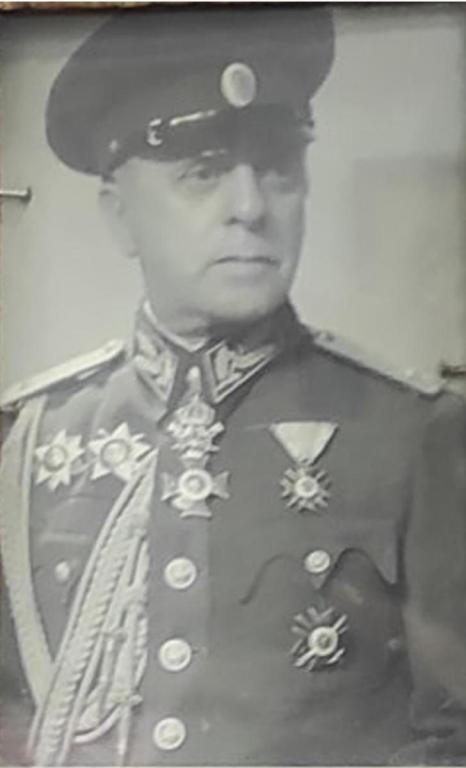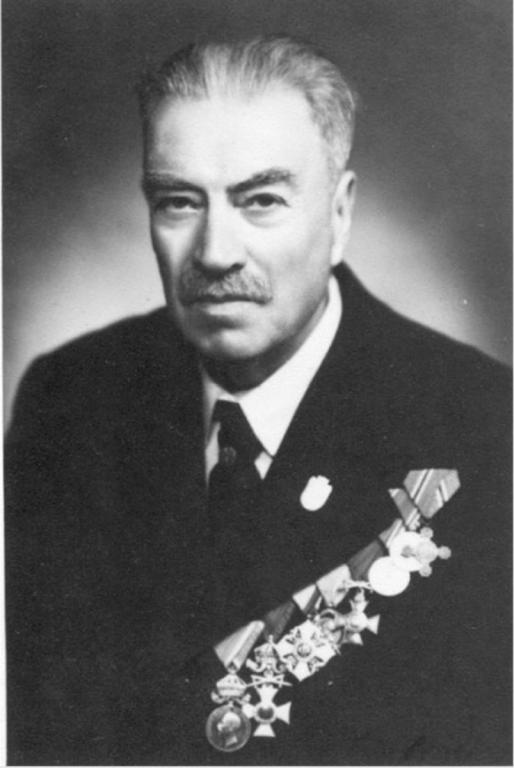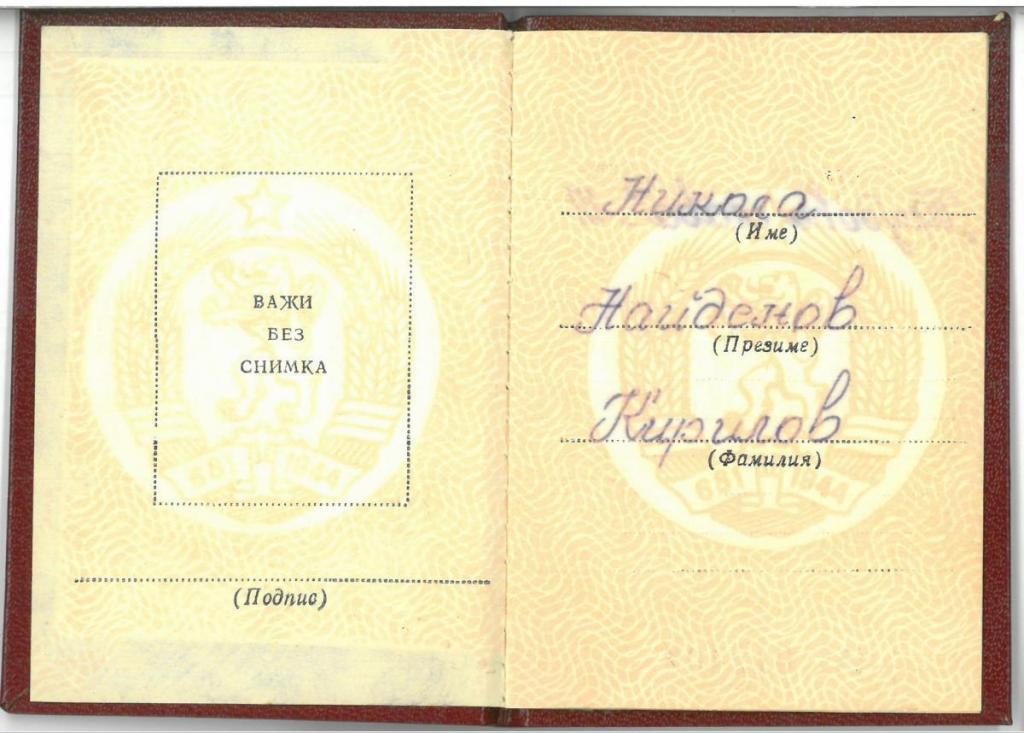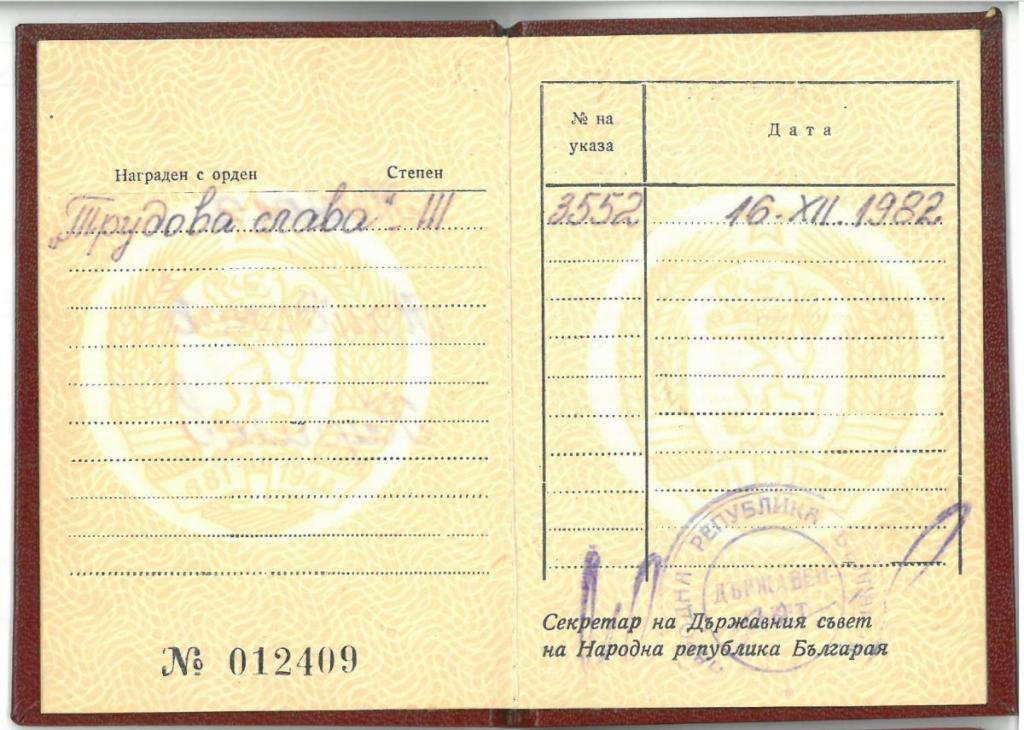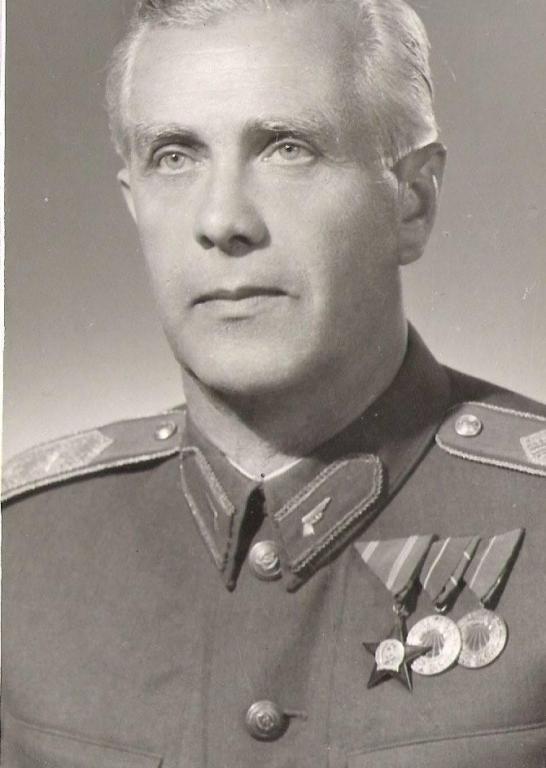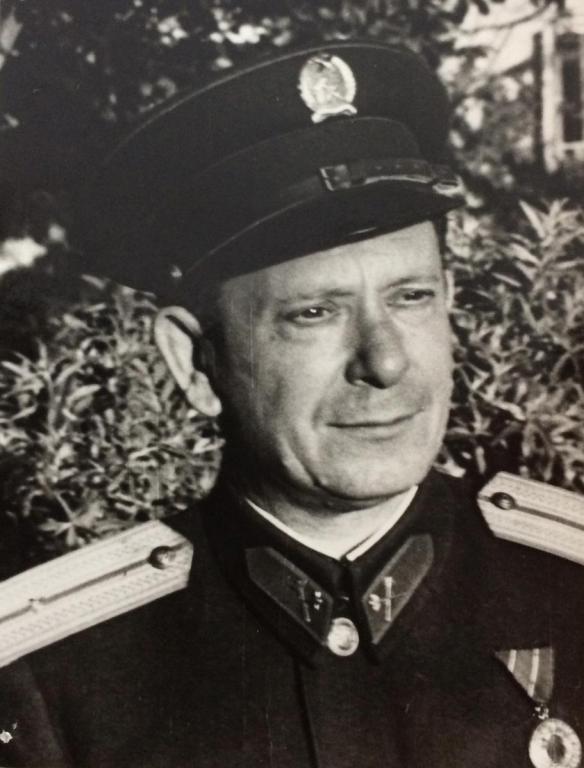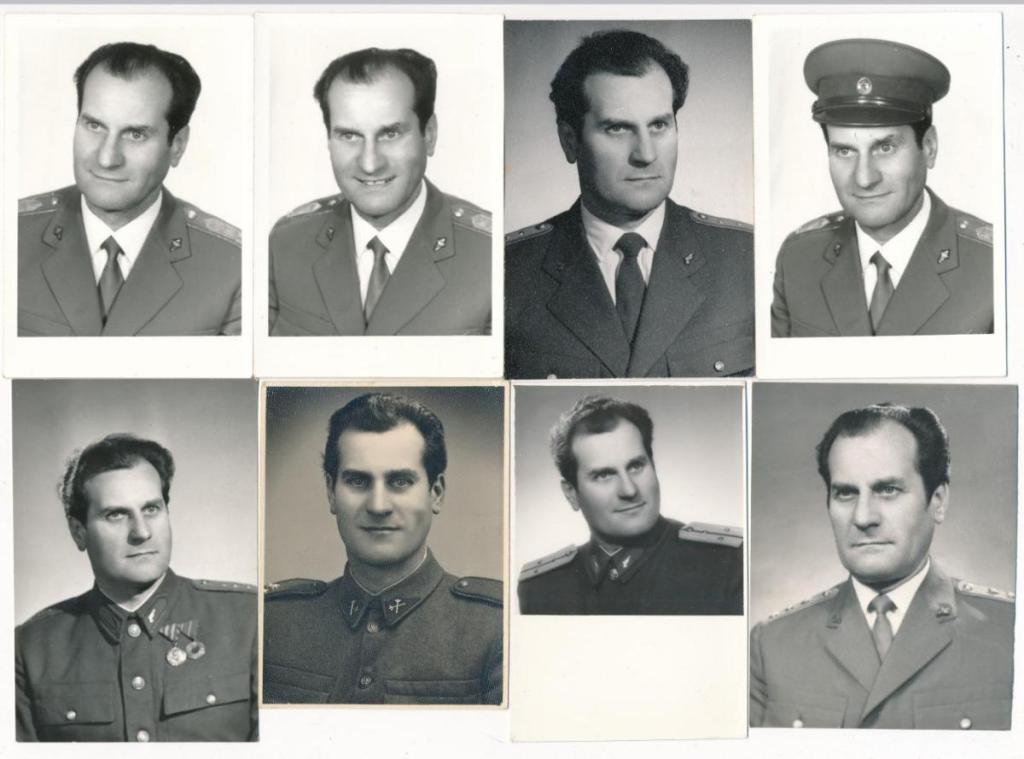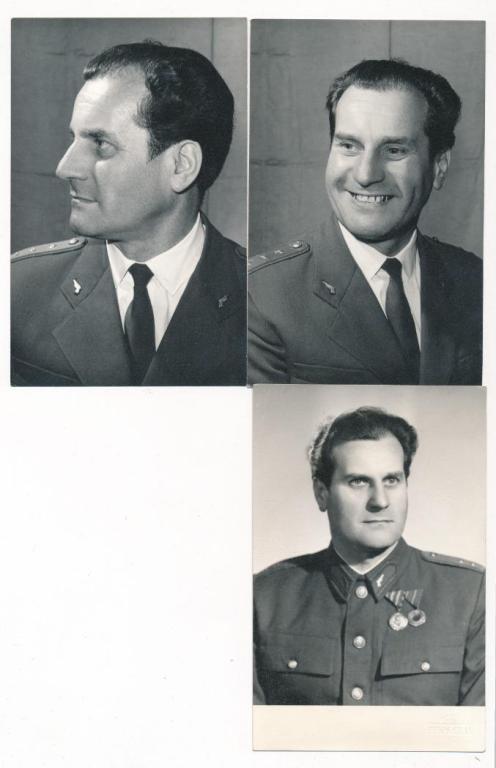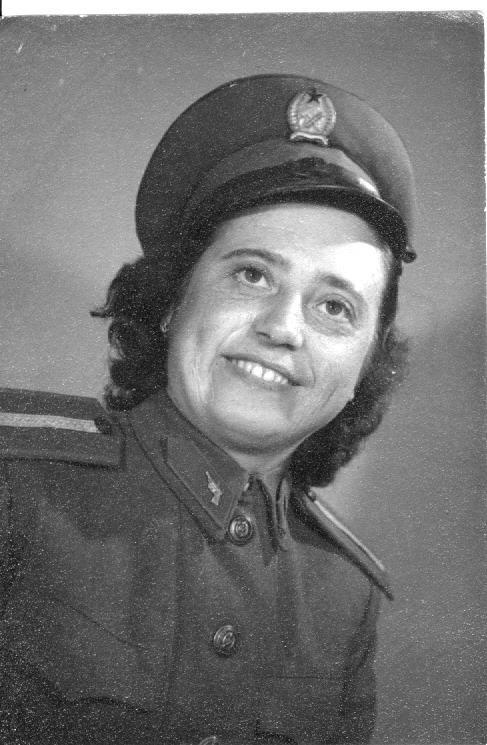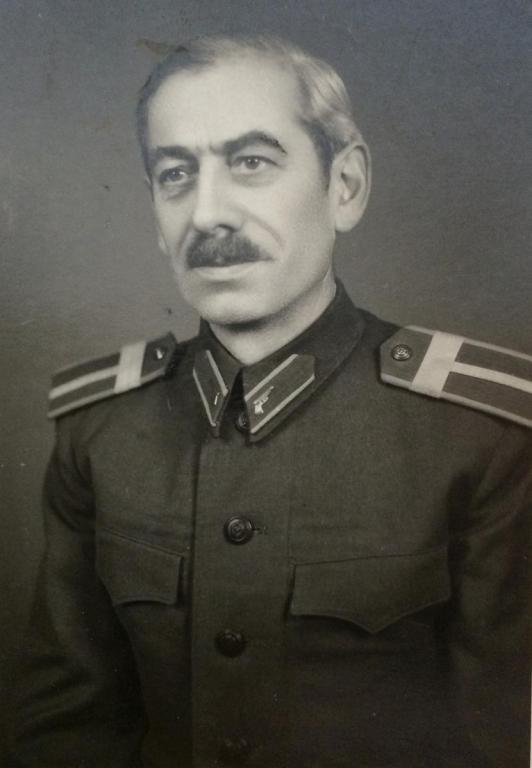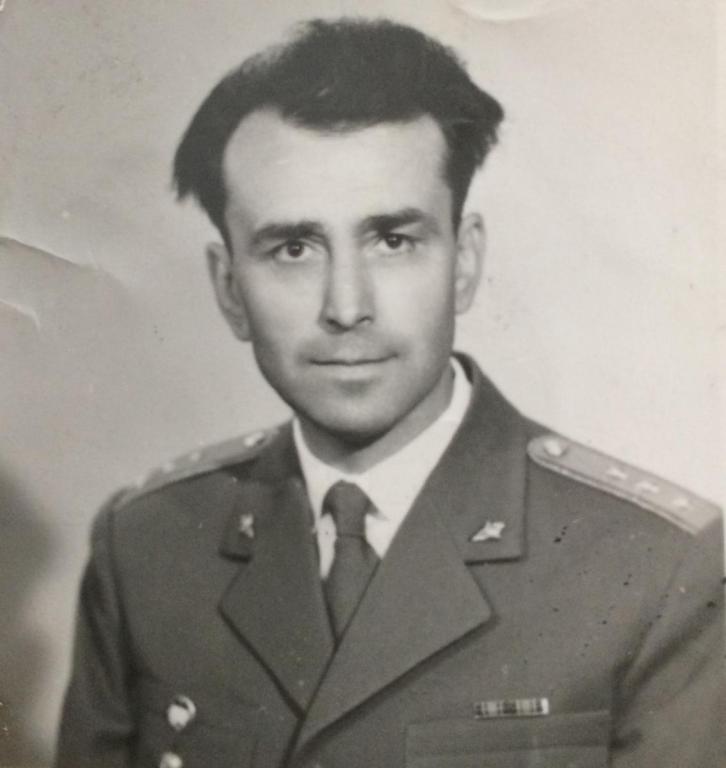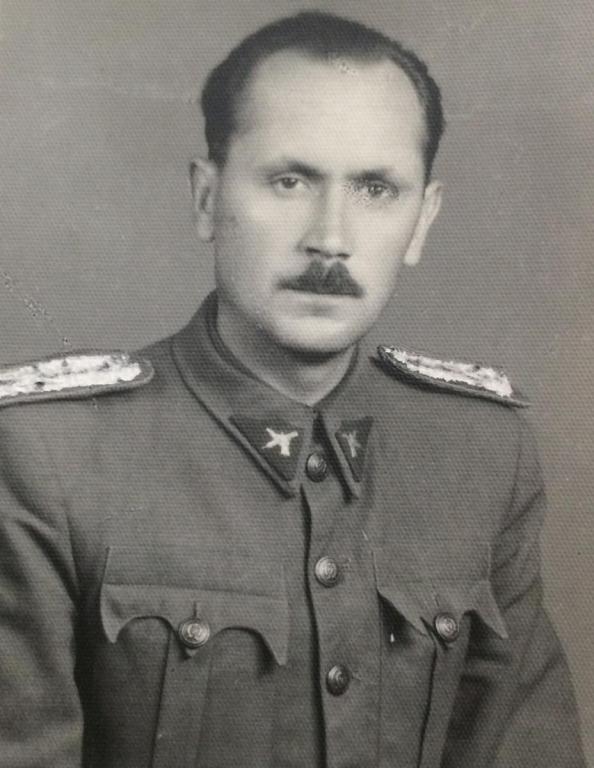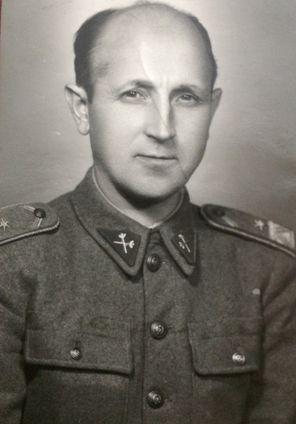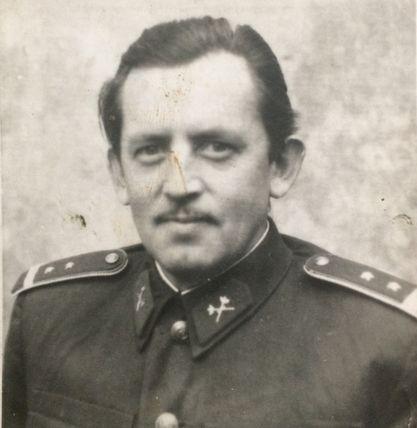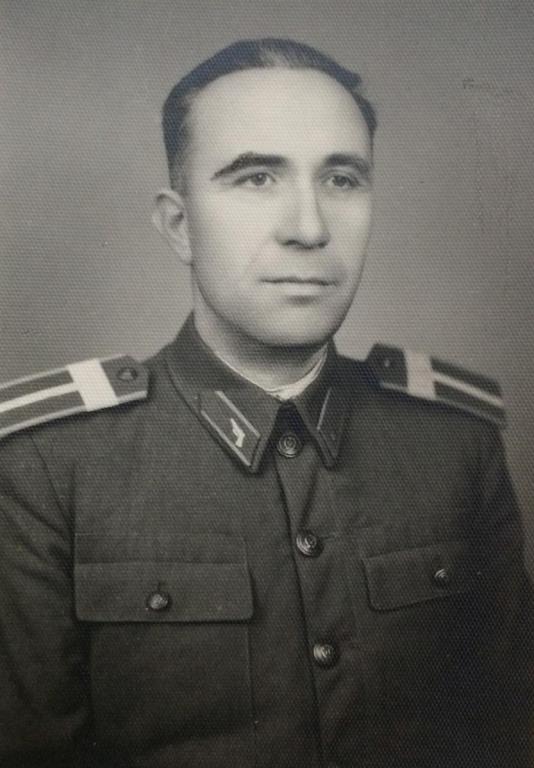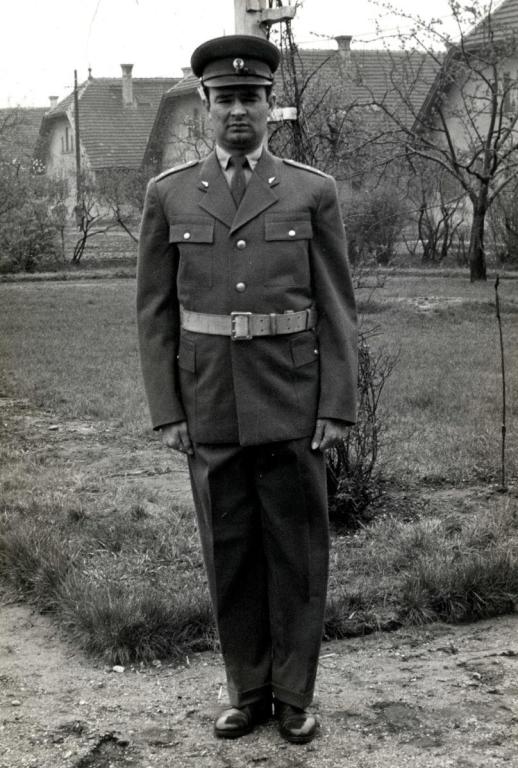
steveBobby
Active Contributor-
Posts
123 -
Joined
-
Last visited
-
Days Won
2
steveBobby last won the day on August 18 2023
steveBobby had the most liked content!
About steveBobby

Profile Information
-
Location
HongKong
Recent Profile Visitors
The recent visitors block is disabled and is not being shown to other users.
steveBobby's Achievements
-
Update On Hungarian P.R. Medal Bar
steveBobby replied to gjw's topic in Central & Eastern European States
Very nice collection,Greg! This is a man who experienced the events of 1956 and served from the Rakosi era to the Kadar era. I particularly like that he also has two medals for controlling the Danube flood. Yours Steve -
PR Bulgaria: Order of the Red Banner
steveBobby replied to Michaelwave's topic in Central & Eastern European States
It seems to me that the founders of the order system of the Bulgarian People's Republic at that time were only considering how to quickly establish a order system that was different from the kingdom or republic period, so fully imitating the Soviet system was a very convenient choice. So it was unnecessary to consider the rationality at that time, because no one would have thought that it would be abolished in 1958. Let’s look at another example: The Bulgarian General and Professional Workers Association proposed to reward workers who have provided many years of service and high-quality work results in the industry, as follows: A. Those who have worked in the same enterprise for 5 years should be awarded the Bronze People's Order of Labor; B. Those who have worked in the same enterprise for 10 years should be awarded the Silver People's Order of Labor; C. Those who have worked in the same enterprise for 15 years should be awarded the Gold People's Order of Labor; D. Those who have worked in the same enterprise for 20 years should be awarded the Red Banner of Labor Order; There is no doubt that this is another very Soviet policy,and the workers involved will also include those in the Tsarist period. Back to the topic of service time:Of course, there is a second possibility. Many of the early officers or senior soldiers in the Bulgarian People's Army were members who were sent to the Soviet Union for military training as political refugees by the Bulgarian Communist Party in the 1920s and 1930s. They joined the Soviet army very early and did not return to Bulgaria until September 9, 1944 or later and served as officers or senior soldiers of the Bulgarian People's Army. For them, the years of service can be re-satisfied, which also meets the needs of the new government to reward their past contributions. Another group of people were old partisans who had been engaged in the fascist guerrilla war in Bulgaria since 1941. They were directly admitted to the army with low or high ranks after September 9, 1944. In this way, a considerable number of them could meet the requirements for the minimum service reward after 1950. I also think that in reality, some officers' service years were counted as part of their service in Tsar Boris' army. Although there are not many such people. -
Kingdom of Bulgaria: National Order for Civil Merit
steveBobby replied to Megan's topic in Southern European & Balkan States
-
PR Bulgaria: Order of the Red Banner
steveBobby replied to Michaelwave's topic in Central & Eastern European States
It does have similar rules to the Soviet Union. According to a report submitted by General Mikhailov, Minister of Defense of the People's Republic of Bulgaria, to the Politburo of the Central Committee of the Bulgarian Communist Party in 1959 on the reform of the awarding of orders and medals for military service: In the years 1950-1958, in accordance with Article 83 of the Law of the People's Republic of Bulgaria on Universal Military Service, officers and soldiers could be awarded orders and medals for impeccable and conscientious service in the army by Decree of the Presidium of the National Assembly No. 649 of December 13, 1950. The specific awarding standards are: the Combat Merit Medal is awarded for 10 years of service; the Third Class September 9 Revolution Order is awarded for 15 years of service; the Order of the Red Banner is awarded for 20 years of service; and the Order of Dimitrov is awarded for 25 years of service. This rule was abolished in 1958 and reformed after 1959 to award three levels of the Good Service Medal. Again, a similar process to the Soviet Union.🧐 Glad to see this information was helpful to you! Yours Steve -
Bulgaria, Kingdom Order of St Alexander
steveBobby replied to Jackie Chan's topic in Central & Eastern European States
Maybe we will never find the answer to this question,Graf. Perhaps it is just a small-scale production of such products in national factories, and there will not be too many records left. Perhaps when we really find a similar photo of people wearing it, we can truly prove its existence. -
PR Bulgaria: Order of the Red Banner
steveBobby replied to Michaelwave's topic in Central & Eastern European States
Greeting! Perhaps I can provide some information. In the National Statistical Yearbook compiled annually by the People's Republic of Bulgaria, there is a separate page used to count the specific number of various high-level medals and awards awarded. In the statistical yearbooks of the early 1980s, there were still records of the specific number of Red Banner medals awarded, but since the mid-to-late 1980s, the Red Banner medal has no longer been counted. Therefore, the data we are discussing can only be used for data in 1980 or 1981, which is a prerequisite. Combining the data from the Statistical Yearbooks of 1969-1970 and 1979-1980, we can draw the following conclusions: 10,253 Orders of the Red Banner were awarded between 1948 and 1960, 1,258 Orders of the Red Banner were awarded between 1961 and 1978, and there is no record of any Order of the Red Banner being awarded in 1979. Due to missing data, we are unable to obtain more specific data on the number of awards of the Order of the Red Banner as of 1989. You also mentioned the part about digital numbers. As for the answer to this part, I can only answer you from the perspective of my own collection. According to my personal observation, the maximum number should be around 13000-14000. I have not yet found a number above 14000. Most of the Order of the Red Banner with numbers were awarded between 1959 and 1960. After that, due to changes in the service rules, the number of the Order of the Red Banner was greatly reduced, and the numbering became meaningless and was abolished. I hope this information is helpful to you. Yours Steve -
Bulgarian Cross for Bravery / За Храбрость
steveBobby replied to Wat05's topic in Southern European & Balkan States
Greeting! Based on common sense and past experience, the recipients of this rank are usually awarded the Soldiers' Cross of Bravery rather than the Officers' Order of Bravery. But perhaps we can make an assumption that the recipient may have performed an extremely heroic act, which led the commander to believe that he should be awarded the Order of Bravery to recognize this behavior. Or another assumption is that all the machine-printed documents were prepared in advance, but no changes were made to some recipients, and he actually received the Soldier's Cross of Bravery. Of course, given the many chaotic issuances between 1945 and 1950, both possibilities are worth considering further. I will show a two similar document from my collection. Yours Steve Another similar recipient, who held the rank of senior captain in the Communist army, but only received the Soldier's Cross of Bravery. I have seen some archives, and the same rules as in the Soviet Army were applied in the Bulgarian People's Army to award orders based on years of service. To receive the Order of the Red Banner, one must have served in the Bulgarian People's Army for at least 20 years, which may explain why his rank could not be changed to officer. Because he served in the Kingdom Army as a soldier until the Communist period, until he was awarded the Order of the Red Banner in the 1950s for his years of service. -
Greeting This is a badge from the Slovak fascist regime, known as “a commemorative badge for the battle against the Soviet Union(Památný odznak Za ťažení proti SSSR)”,Established in 1943 by Josef Tissot, leader of the Slovak state.The badge is divided into three levels. The gold badge is awarded to front-line personnel who personally participated in combat outside Slovakia and participated in combat for 30 days; the silver badge is awarded to those who did not personally participate in combat outside Slovakia but served in the combat area for at least 30 days; the bronze badge is awarded to those who served in the Slovak army or labor forces on the Eastern Front for at least three months.I'll include a few photos of the wearers below, I hope it helps you. Yours Steve
-
Bulgaria FAKE BULGARIAN ORDERS ON THE MARKET
steveBobby replied to Graf's topic in Central & Eastern European States
While the build quality is a bit poor, I think this is authentic as it dates from the First World War. Yours Steve -
Bulgaria, Kingdom Order of St Alexander
steveBobby replied to Jackie Chan's topic in Central & Eastern European States
Greeting ! This pattern of order I believe appeared during World War II between 1943 and 1945 as a temporary version due to a shortage of certain parts.I'll include photos of two actual wearers below to back up this claim. Yours Steve -
Bulgarian P.R. Order of Labor Glory
steveBobby replied to gjw's topic in Southern European & Balkan States
I would like to add some order of Labor Glory certificates to this topic, maybe will helpful for you. Yours Steve -
Hungary Hungarian Mining Awards
steveBobby replied to Greg Collins's topic in Central & Eastern European States
A beautiful reward from the days of the Laxey administration! A nice acquisition, congratulations! Yours Steve -
Need Some Help - Bulgarian Order of Labor Glory
steveBobby replied to gjw's topic in Central & Eastern European States
Greeting Greg! They look very normal, I think they are original. Yours Steve


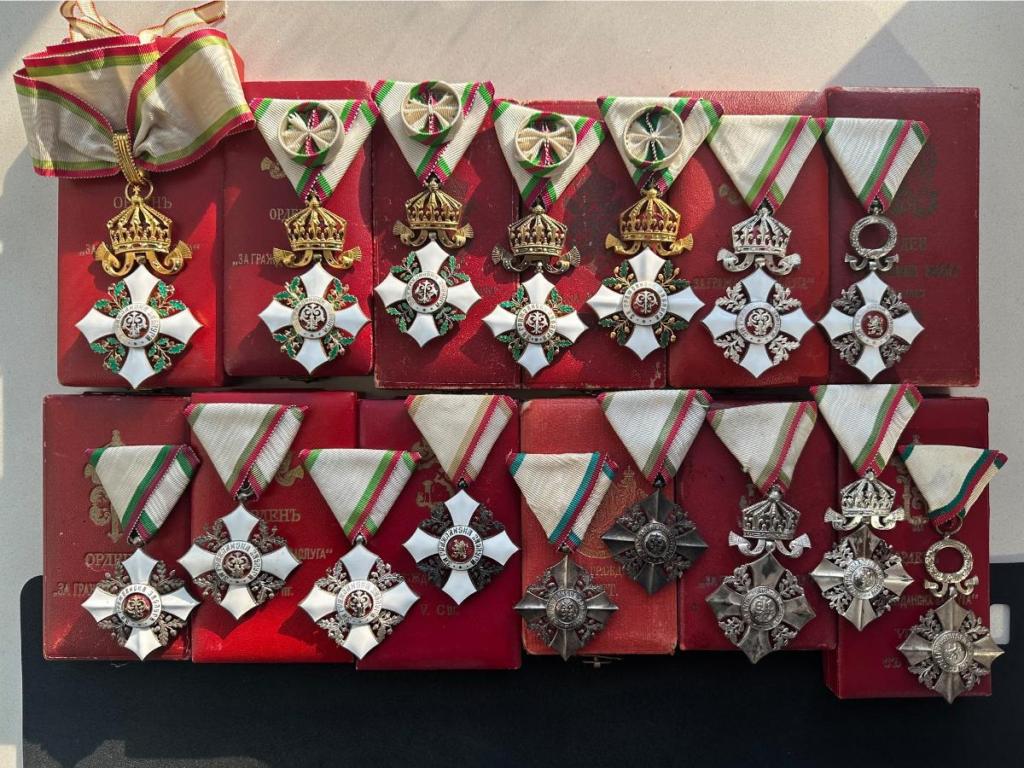
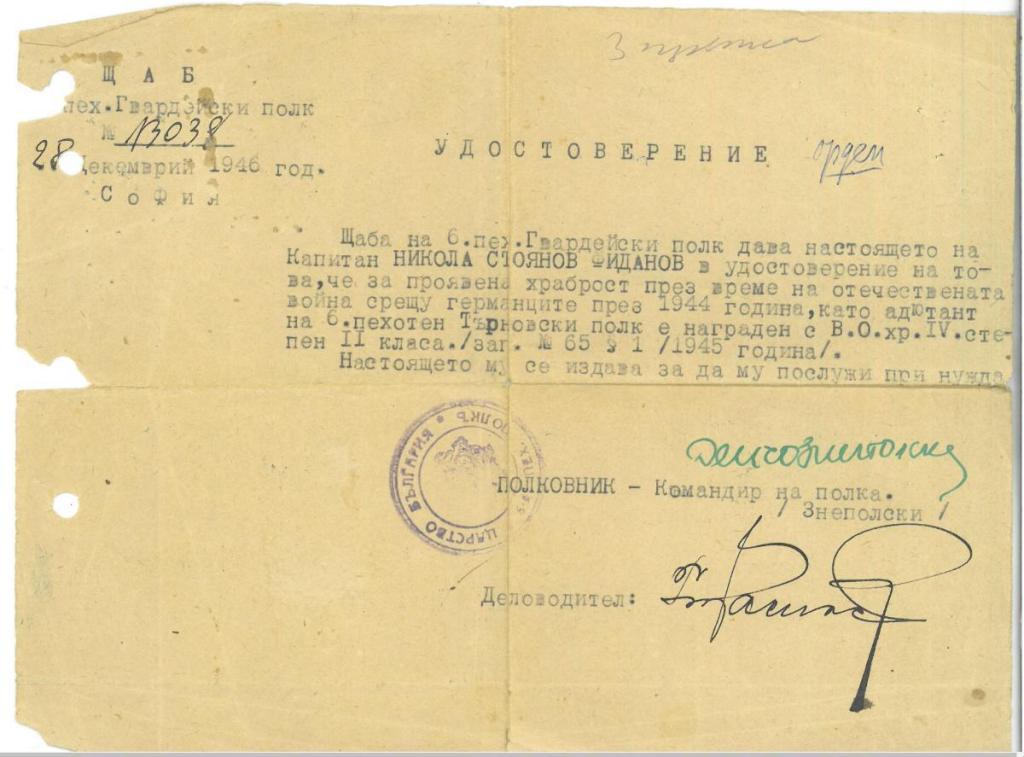
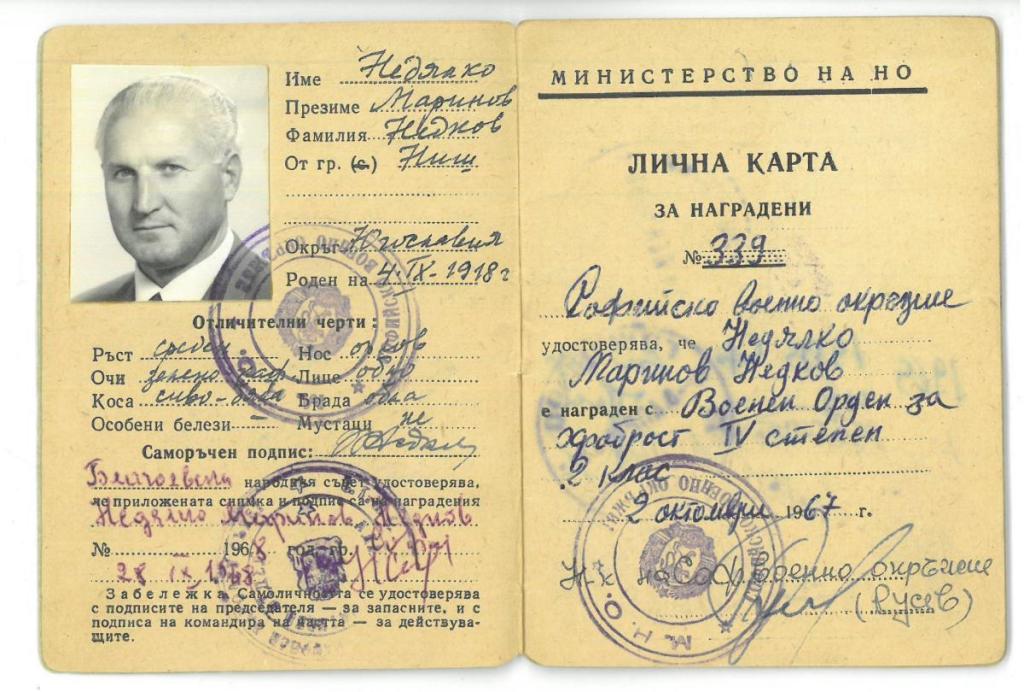


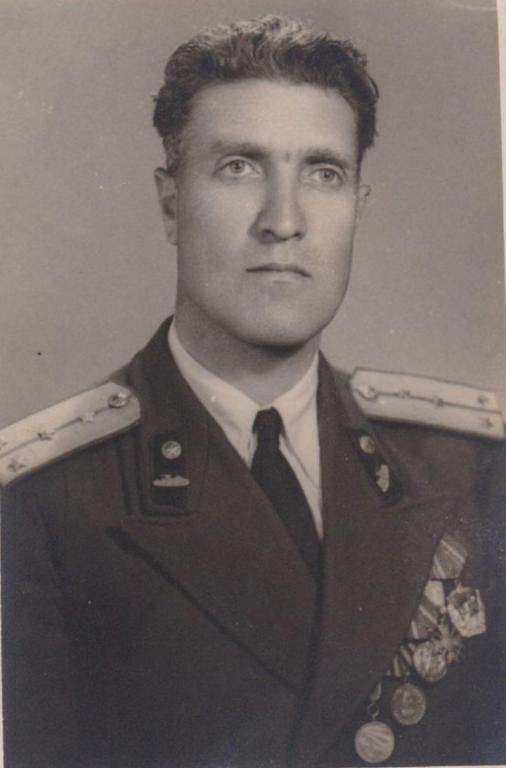
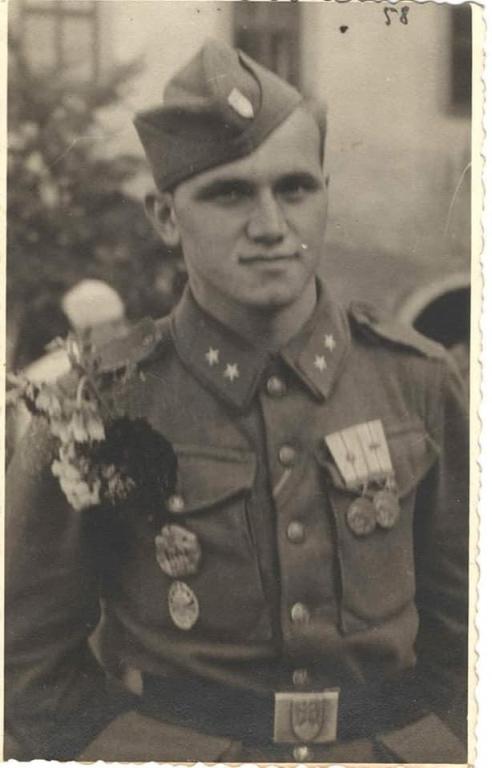
9WO.jpg.41b129e42727cfcca9a2c7578e6ac56f.jpg)
